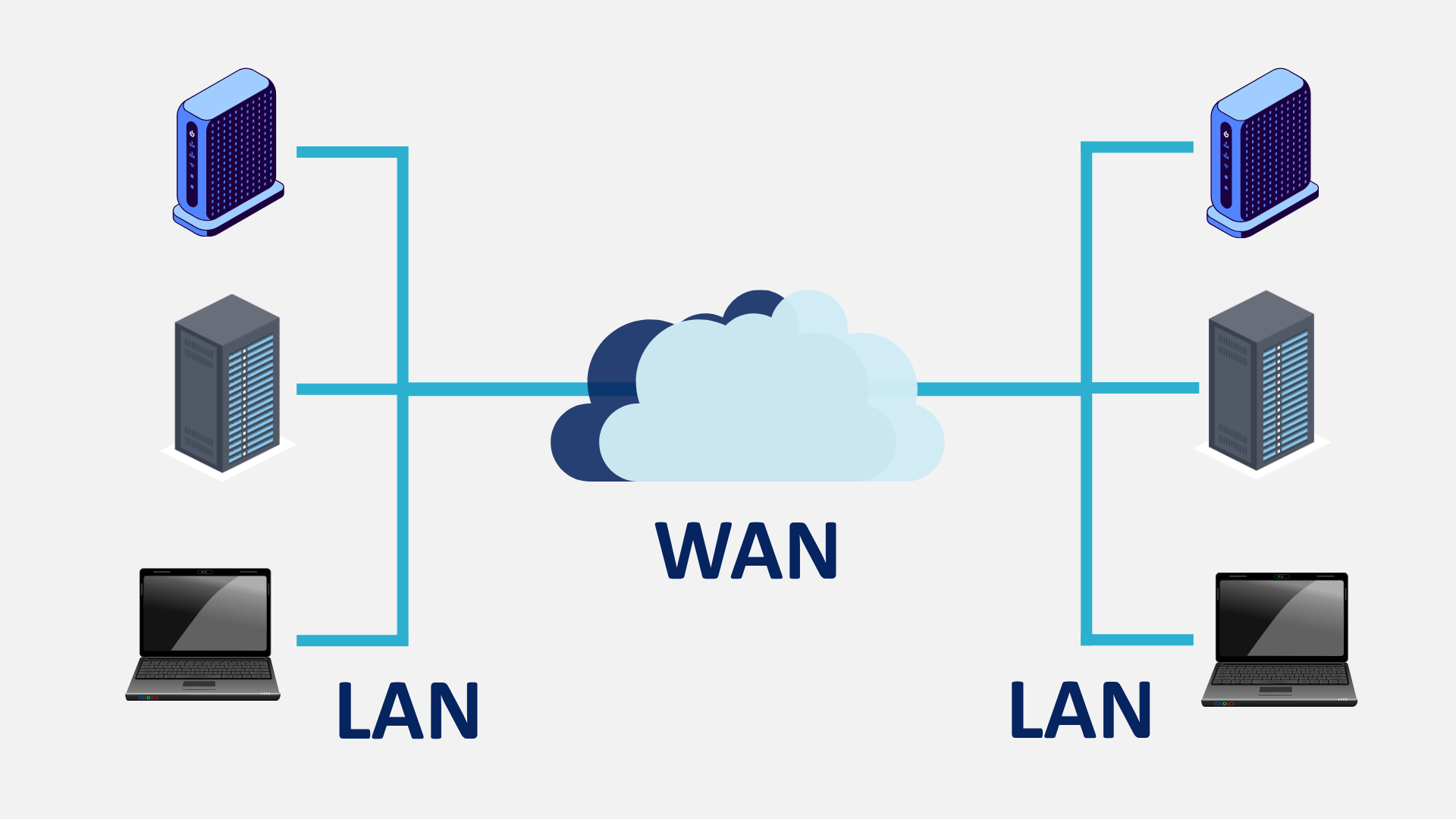
For many businesses, maintaining both WAN (wide-area network) and LAN (local-area network) operations is essential for reliable performance and security. Yet, certain assumptions around managing IT infrastructure can lead to decisions that create friction between vendors and more headaches for your team down the line.
In this blog, we’re addressing some frequent misconceptions about WAN and LAN management—and why a unified provider might be a better option than many realize.
To start, let’s break down the difference between LAN and WAN:
- LAN (Local Area Network): This is your internal network—the switches, access points, cabling, and devices that operate within your building or multiple locations.
- WAN (Wide Area Network): This refers to your external connectivity, including your internet circuit, routing equipment, and the services managed by your internet service provider.
The handoff between the LAN and WAN typically happens at the DMARC (demarcation point). That’s where one provider’s responsibility commonly ends, and another begins.
With that context in mind, let’s explore some common assumptions.
Assumption #1: “Working with separate providers ensures more specialized expertise.”
Reality: While it’s true that some providers focus on either WAN or LAN, working with a unified provider doesn’t mean sacrificing specialized knowledge. In fact, a provider that handles both WAN and LAN often brings a holistic view of the network and has expertise across both areas. This comprehensive approach enables them to optimize the entire network ecosystem, making sure that data flows smoothly from external connections into your internal network.
Example: In a video surveillance or voice deployment, both external bandwidth and internal network performance are critical. A provider with visibility into both environments can ensure smooth performance across the board.
Assumption #2: “Troubleshooting is faster with two separate providers.”
Reality: Having two providers increases resolution times—especially if it is unclear if the issue is on the WAN or LAN side. With separate providers, troubleshooting often requires coordination between the two, which can lead to delays and finger-pointing.
Working with a single provider, on the other hand, allows issues to be addressed across both networks without needing to pass the problem back and forth.
Assumption #3: “Managing WAN and LAN together is more expensive.”
Reality: In many cases, consolidating WAN and LAN under one provider is actually cost-effective and can allow for more predictable budgeting. Working with multiple providers means managing multiple contracts, support tickets, and billing systems, which can add both cost and complexity to your team.
Example: WIN’s Circuit + Firewall bundle simplifies procurement and management by combining WAN access and secure perimeter protection into a single, cost-effective solution.
Assumption #4: “WAN and LAN security are best handled separately.”
Reality: Security is most effective when it is coordinated across all parts of the network. When WAN and LAN security are managed by separate providers, it can lead to gaps in protection or inconsistent security measures.
Working with a single provider can ensure security policies are applied consistently across both internal and external networks, helping protect data from end to end. This comprehensive security approach can also make it easier to detect and respond to threats, as the provider has full visibility into the entire network environment.
Assumption #5: “Switching to a unified provider is complex and disruptive.”
Reality: Changing providers for any service can be a significant decision, but it doesn’t have to be disruptive. A qualified provider will have experience in transitioning businesses to an integrated approach, minimizing downtime and ensuring a smooth changeover.
By consolidating services with a single provider for both your IT and network needs, businesses often find that day-to-day operations become more streamlined and that they spend less time managing support from a handful of providers.
Moving Past the Divide
For some businesses, managing WAN and LAN separately still works—but if you’re familiar with the finger pointing between vendors or slow resolution times, it’s worth considering a more unified approach.
At WIN, we can provide services on both sides of the DMARC, allowing us to take full management of network performance and deliver a seamless experience for your users. From fiber circuits and firewalls to internal switching and access points, we help ensure your infrastructure works together as one cohesive system. Contact us to learn more.
